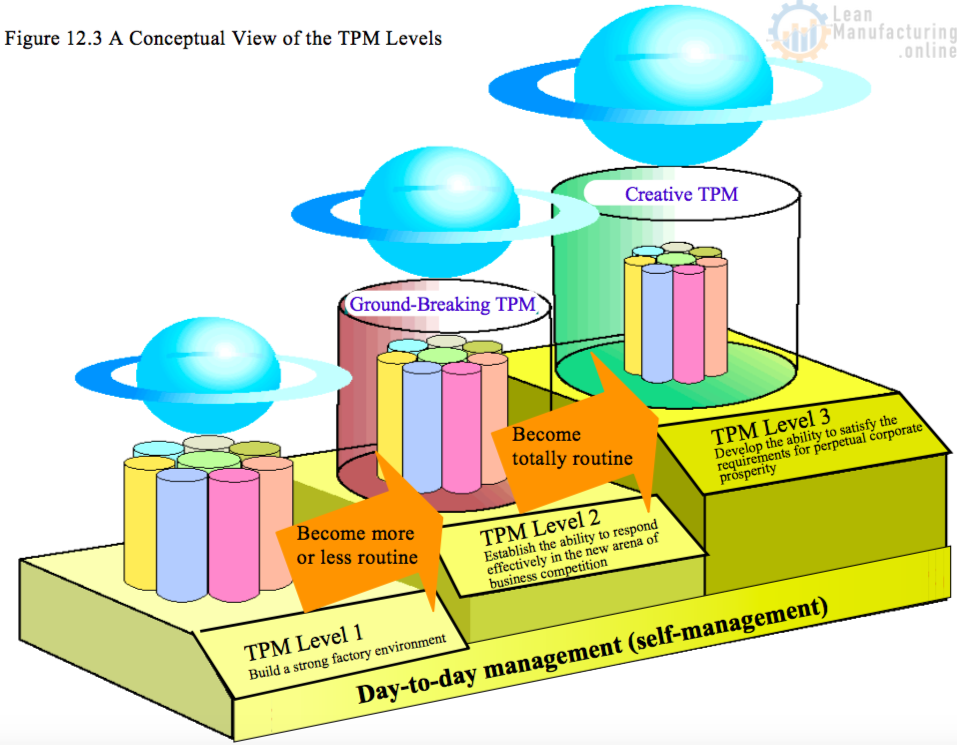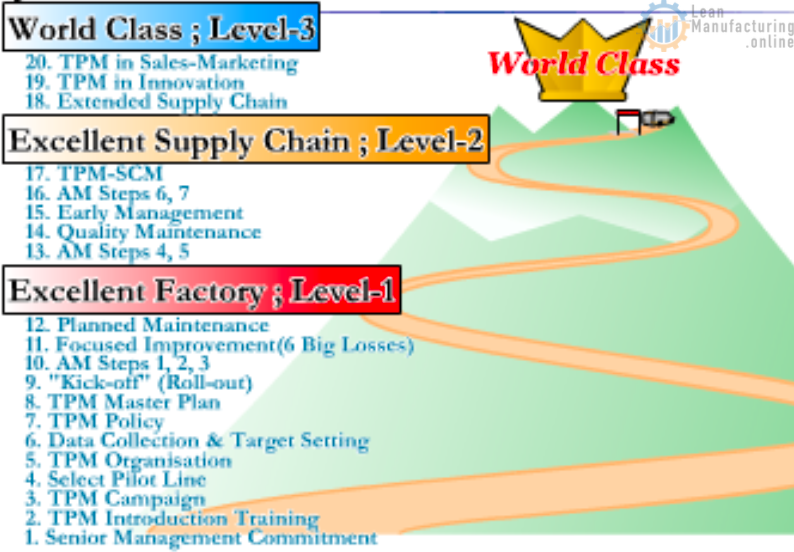5. Reviewing the Autonomous Maintenance Steps
5.1 Autonomous Maintenance reviews
An Autonomous Maintenance review is a coaching session carried out by a higher-level group in the overlapping small group pyramid in order to ensure that every member of the team under review has fully understood the purpose of the Autonomous Maintenance step they have just completed. It should carefully examine how the team activities are being implemented and how the shop-floor is shaping up, and clearly identify any concerns and problems the team members are experiencing, so that the necessary guidance and help can be provided. A review is not just a matter of assessing the team’s efforts on a pass-fail basis. If any shortcomings are found, a meeting should be held, and the team under review and those performing the review should decide together what remedial measures are needed.
5.2 The purpose of reviews
The idea behind a review is not simply to point out to the team members where they are going wrong. It is also vital to show them the things they are doing well, and encourage them to make the most of their individual talents.
By receiving a review, a team can:
- Find out whether or not it has achieved the required level.
- Breathe new energy into its activities, by discovering where its strengths and weaknesses lie.
- Do a stocktake of all the things it needs to do, and decide on a suitable direction for its future activities.
Before applying for an official review, a team should carry out its own self-review. This will help it to see whether it has adopted the right approach and is implementing its activities in the correct way.
Figure 5.49 shows a typical workflow for Autonomous Maintenance reviews, while Tables 5.9 to 5.13 show actual examples of Autonomous Maintenance review sheets. Review sheets of this kind should be drawn up by the Autonomous Maintenance Subcommittee, for instance, during the preparatory phase for introducing TPM, and should be based on the work done on the management pilot models. There is no single ‘perfect’ format for review sheets, so these examples should be used as a reference for creating your own review sheets more closely tailored to the situation in your particular company.
When a unit has cleared the senior management review, a ‘Pass’ sticker is usually presented to be displayed on the piece of equipment in question.
Figure 5.49 shows a typical workflow for Autonomous Maintenance reviews



















